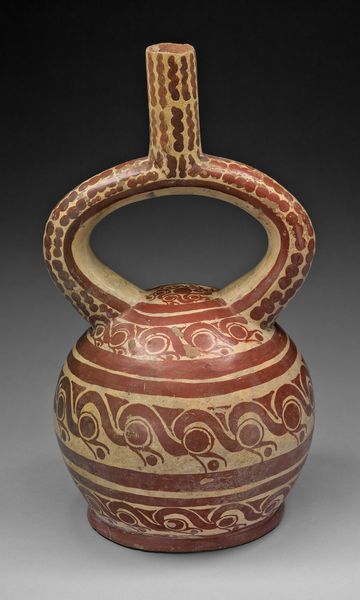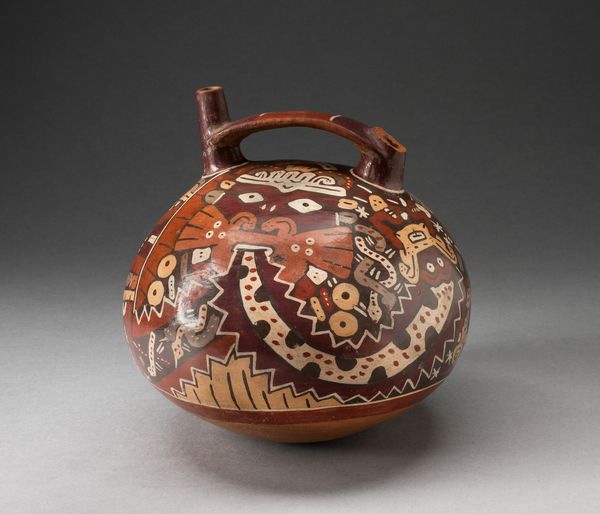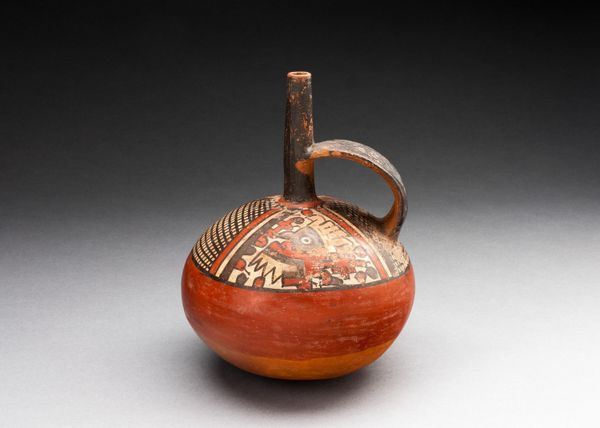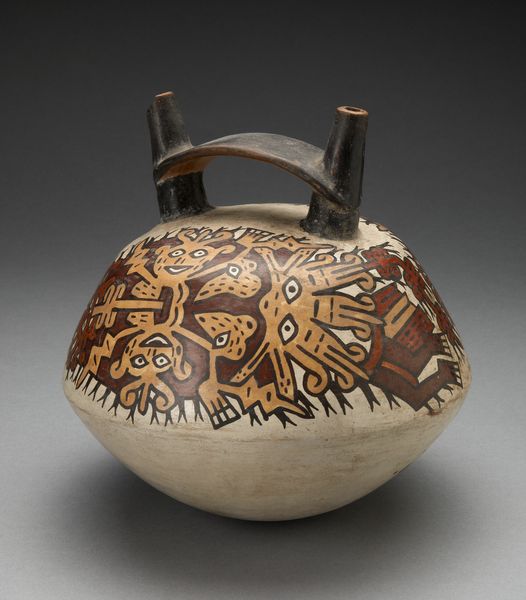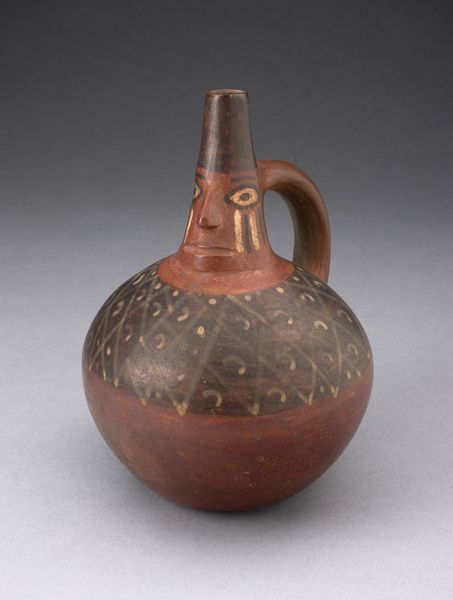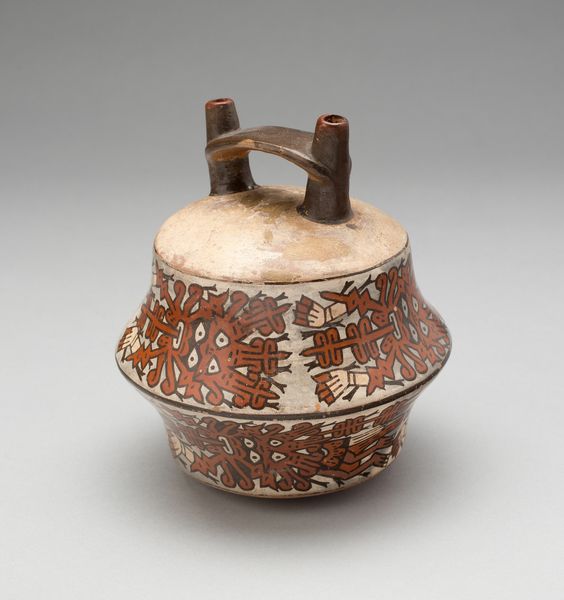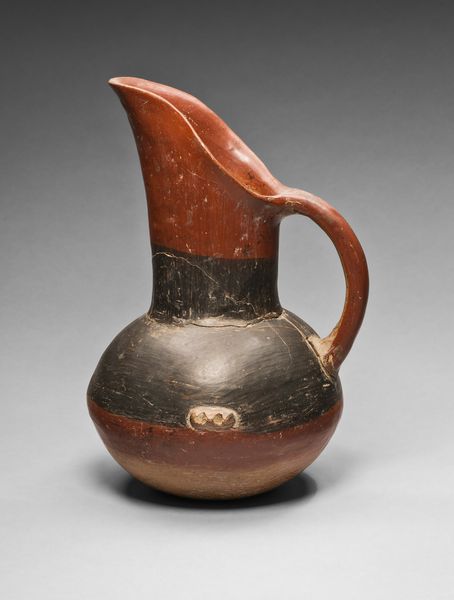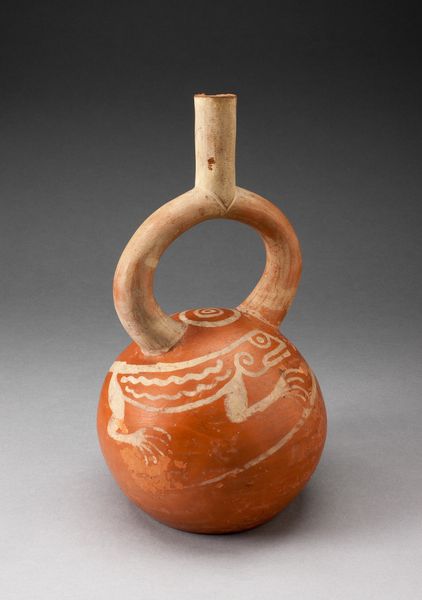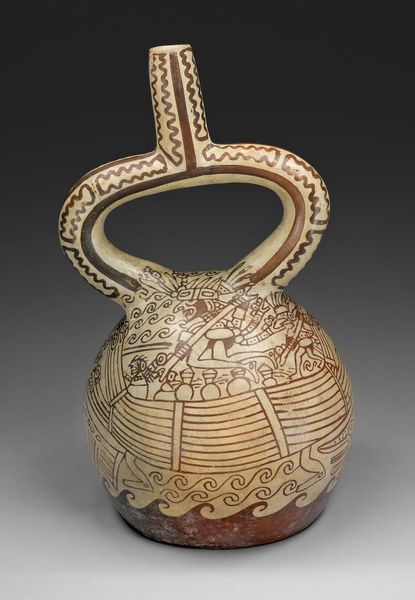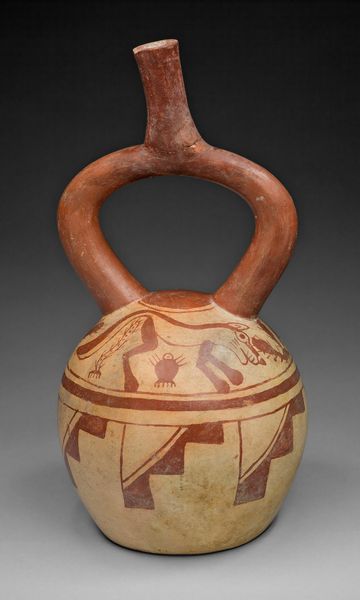
Jar with Strap Handle Depicting Abstract Figure, Possibly a Monkey, with Plants Possibly 600 - 1000
0:00
0:00
ceramic
#
ceramic
#
figuration
#
ceramic
#
indigenous-americas
Dimensions: 18.3 × 13.7 cm (7 3/16 × 5 3/8 in.)
Copyright: Public Domain
Editor: Here we have a ceramic jar, dating from around 600 to 1000 CE, created by the Nazca people. It features an abstract figure—possibly a monkey—intertwined with plant imagery. I find the way the artist combines recognizable forms with abstraction particularly striking. What do you see in this piece? Curator: I see a powerful visual statement about the interconnectedness of life. This jar isn't just a container; it's a microcosm reflecting the Nazca worldview. The monkey figure, rendered in an abstract style, is simultaneously an animal, a symbol, and perhaps even a deity. How does it challenge our assumptions about the boundaries between the human, animal, and plant kingdoms? Editor: That's interesting. I hadn't considered the deliberate blurring of boundaries. I was focusing more on trying to decode the imagery. Curator: Exactly, and that's the point! Think about the colonial gaze and how Indigenous art has often been interpreted through a Western lens that seeks to categorize and define. This jar resists that kind of rigid interpretation. What impact do you think this piece may have had on the original viewers within the Nazca society? Editor: Well, considering its ritualistic function, maybe it was meant to invoke a sense of awe and mystery? It challenges us to consider a non-hierarchical relationship with the natural world. Curator: Precisely. And that is very relevant today when we discuss sustainability. By seeing this relationship on a vessel from the past, it challenges our Western views. We can perhaps integrate this with social justice, too. Editor: I never thought of it that way! This is incredibly enlightening. Curator: I agree! Exploring the artwork through an interdisciplinary lens opens up multiple dimensions to consider!
Comments
No comments
Be the first to comment and join the conversation on the ultimate creative platform.


